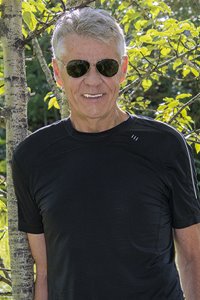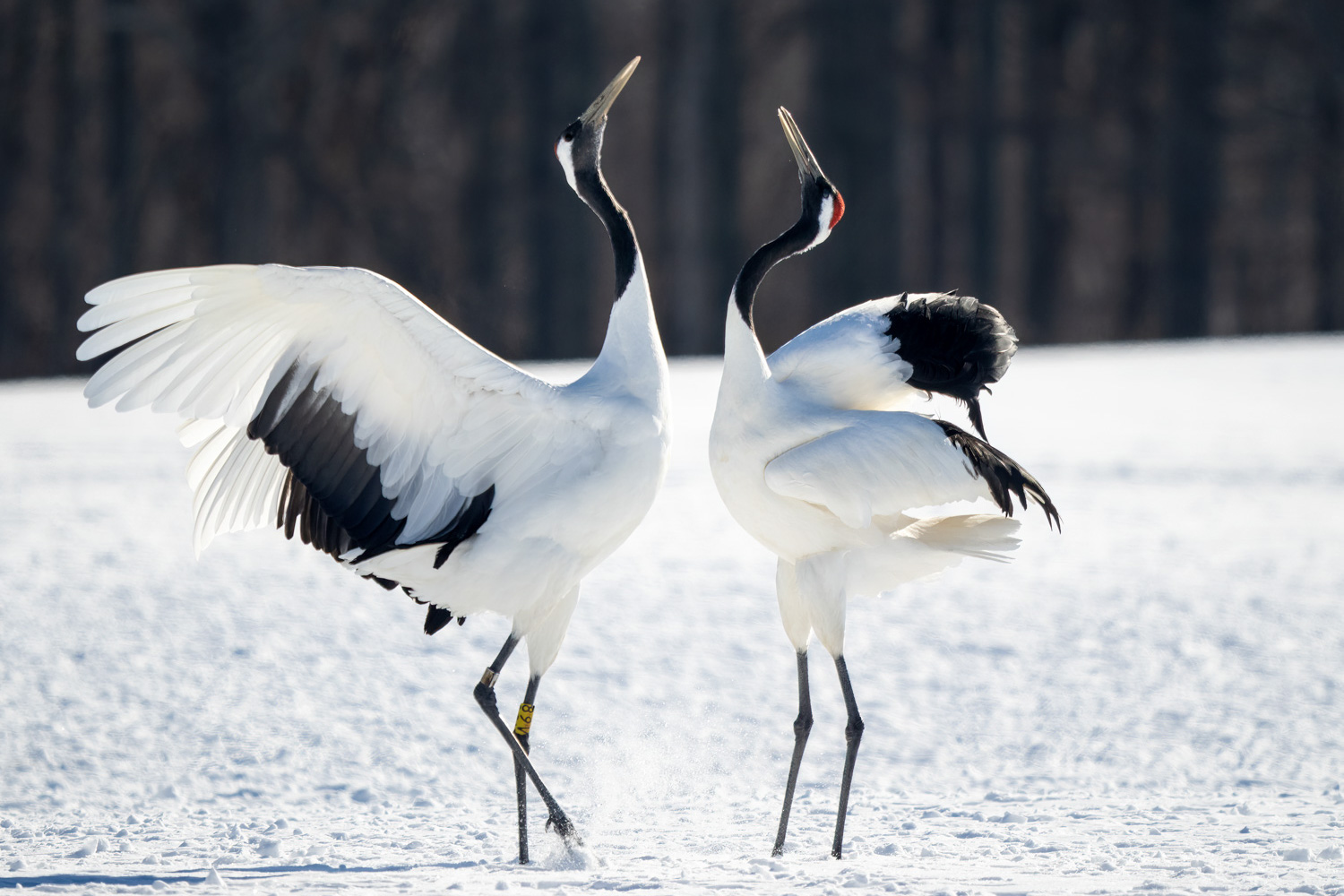Stretching for 1,800 miles and comprised of nearly 7,000 islands along the northwestern rim of the Pacific Ocean, is the “Land of the Rising Sun”, Japan, a land like no other. Travelers come to this legendary archipelago for a multitude of reasons. Some want to indulge in the exotic cuisine, theatrically prepared and served by highly trained chefs. Others want to revel in the beauty of snow-capped Mount Fuji—a sacred object of Shinto worship and an artistic inspiration for millennia. Still others seek the tranquility of Shinto temples and their accompanying resplendent gardens, while some come to marvel at the athleticism of corpulent sumo wrestlers. Few, however, come for the wildlife, yet Japan in winter offers some of the best wildlife photography on the planet. For nearly 25 years, Van Os Photo Safaris has been focused on this seasonal wildlife spectacle and in January 2024 I was privileged to lead this trip.
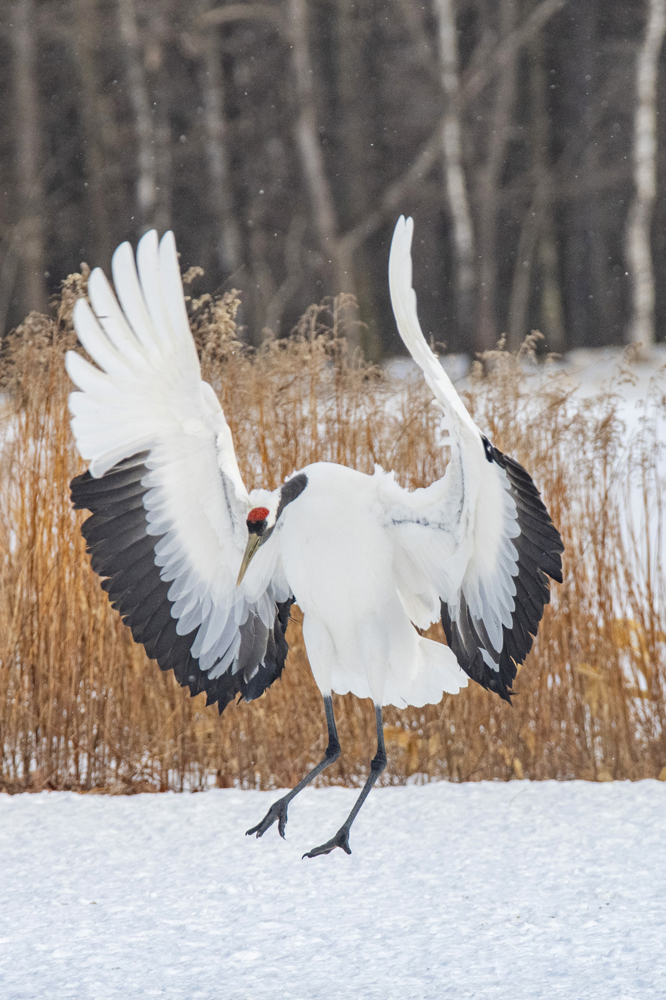
The trip focuses on the winter aggregations of five spectacular species: red-crowned cranes, whooper swans, Steller’s and white-tailed sea eagles, and Japanese macaques, more commonly known as snow monkeys.
The trip began with a welcome dinner in Tokyo, followed the next morning by a 1 ½-hour flight to Hokkaido, the most northern of Japan’s four largest islands. Within two hours of landing, we were photographing a large flock of red-crowned cranes—a national treasure and a symbol of longevity and good fortune for many Japanese. The crane, however, wasn’t always so revered as they were hunted to near extinction in the late 1800s and early 1900s. Starting in the 1930s, a few concerned local farmers living on the edge of Kushiro Shitsugen National Park, began to feed the cranes in winter and the population slowly began to recover.
Today, Hokkaido boasts a non-migratory population of roughly 1,600 cranes, all of whom spend the winter months foraging in numerous river valleys and estuaries, as well as at supplemental feeding sites, operated by the Wild Bird Society of Japan, which attract hundreds of these statuesque wading birds. On the tour we visited three different crane aggregations, including a sunrise location where many cranes spend the night in the shallows of the Setsuri River. On the morning of our visit, the river was cloaked in a veil of photogenic mist.
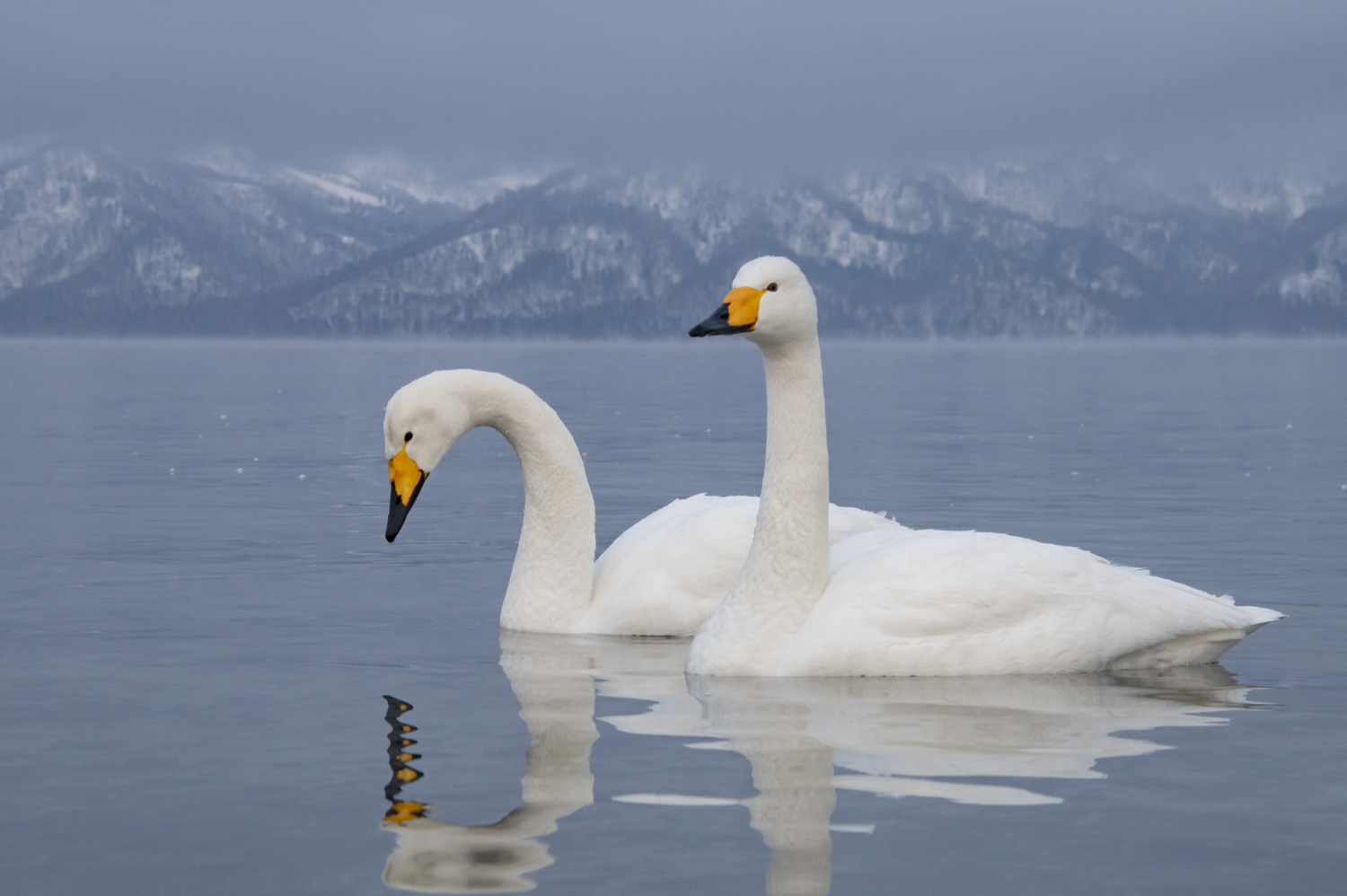
Following our days with the cranes, we moved north a short distance to Lake Kussharo where hot volcanic springs keep the subarctic lake from completely freezing, providing migratory whooper swans, which have flown from the wetlands of boreal Russia, an ice-free winter refuge. Whooper swans are one of the largest and most beautiful of the world’s six species of swans. Male swans, called cobs, can tip the scales at 30 pounds and are considered among the heaviest of flying birds.
Although the swans typically feed on aquatic vegetation in the ice-free waters, locals commonly feed the birds grain, and this provided our group with endless photographic opportunities with habituated birds in a natural setting. Previously, on countless occasions, I have photographed tundra and trumpeter swans in Canada, but nothing prepared me for the rich photo moments we had with the whoopers in the beautiful winter landscape of Lake Kussharo. While we were in the area with the swans we also focused on the flooded caldera of Lake Mashu, the steaming, sulphurous fumaroles of Mount Io, and the many songbirds that visited the feeders at our hotel. It was not uncommon for our hotel feeders to attract four different species of feisty, energetic tits, as well as three species of head-banging woodpeckers, delicate Eurasian nuthatches, and beefy Eurasian jays.
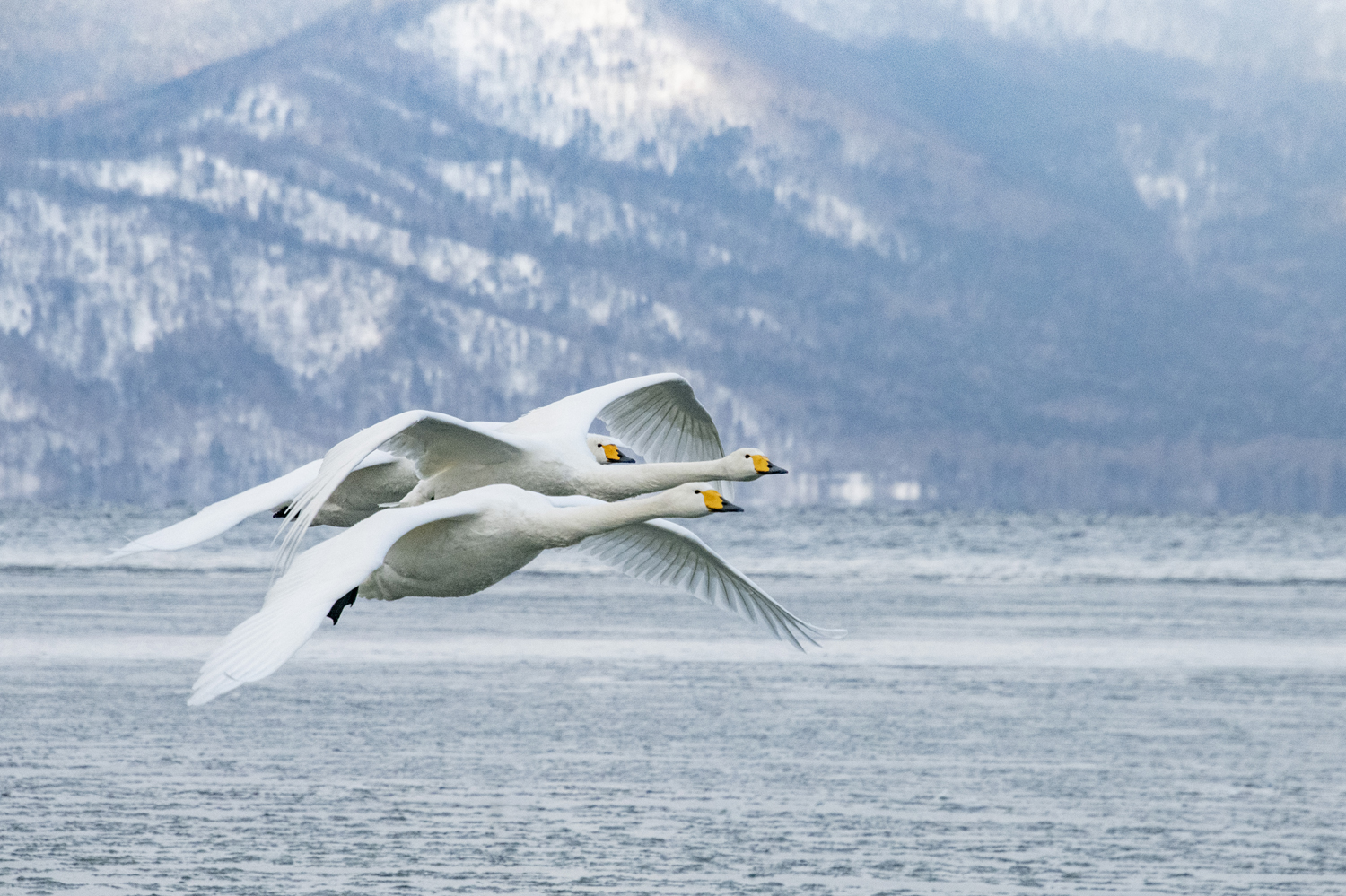
After the angelic beauty of the whooper swans, we moved to the northeastern corner of Hokkaido where we were able to photograph majestic Steller’s sea eagles at close range, as well as their close relatives the white-tailed sea eagle, all within view of the Russian occupied island of Kunashiri. All sea eagles have relatively short toes, long, strongly curved talons, and roughened bottoms on their feet, necessary adaptations for catching fish, although these opportunistic raptors will also hunt waterfowl, cranes, gulls, and small mammals, as well as scavenge beached whales and seals. Large female Steller’s sea eagles can weigh up to a whopping 15 lbs, which is marginally heavier than the legendary harpy eagle of the Amazon rainforests.
Although the white-tailed sea eagle is lighter in body weight and weighs just 10 lbs its wingspan is the greatest of any eagle, reaching a width of 7’ 2”. Both massive, fish-eating raptors nest in Russia and only migrate to northern Japan in winter. In the 1980s, during the heyday of the pollock fishery, many of the eagles overwintered on the Shiretoko Peninsula, thriving on the wastes from the fishing industry. After decades of overfishing by Russian, American, Chinese, Taiwanese, and Japanese boats, the fishery was a shadow of its former size, and the wintering eagles began to move elsewhere as a consequence. Enterprising local fishermen quickly realized that there was income to be made by taking tourists and photographers out to the ice edge where they could lure the unwary eagles close to their boats by tossing out frozen herring, much to the delight of all their passengers.

On the tour, we were based in the small fishing village of Rausu. From there we made two memorable morning trips out to photograph the eagles. Each outing lasted 2-3 hours depending upon how far offshore the ice edge was located. On our first morning out, the shifting ice was too far north to reach so we stayed near the harbour and photographed the birds while a snowstorm swirled around us. It was not the photo experience we were expecting, but the weather conditions yielded surprisingly novel images.
The unexpected snowstorm raged throughout the night. By the following morning the persistent north wind had rafted the sea ice within a 10-minute cruise of Rausu and the sunshine had returned, making conditions perfect for photography. Additionally, on our short trip to the ice we were joined by a pod of killer whales that swam beside us for much of the way. Once we were at the ice edge, the fishermen began tossing out herring, and dozens of eagles miraculously converged around our boat, staying nearby for nearly two hours. That morning, some of our group shot over 8,000 images! I can honestly say I was overwhelmed by the variety of behavior we witnessed, and hopefully, we captured some of it with our cameras.

While staying in Rausu we spent our afternoons exploring the Notsuke Peninsula, a long, narrow finger of land that arches out into the marine waters of Nemuro Strait. The peninsula is largely covered with golden grass which made wildlife spotting easier than if there had been forests, and the wildlife spotting was superb. On both afternoons we were on the peninsula, we saw dozens of sika deer, including many males with a handsome rack of antlers, as well as half a dozen different red foxes, a couple of which were extremely unwary and came close enough for portraits. I’m guessing the foxes had been previously fed by tourists and the opportunistic vulpines hoped we would continue the tradition, which we did not.
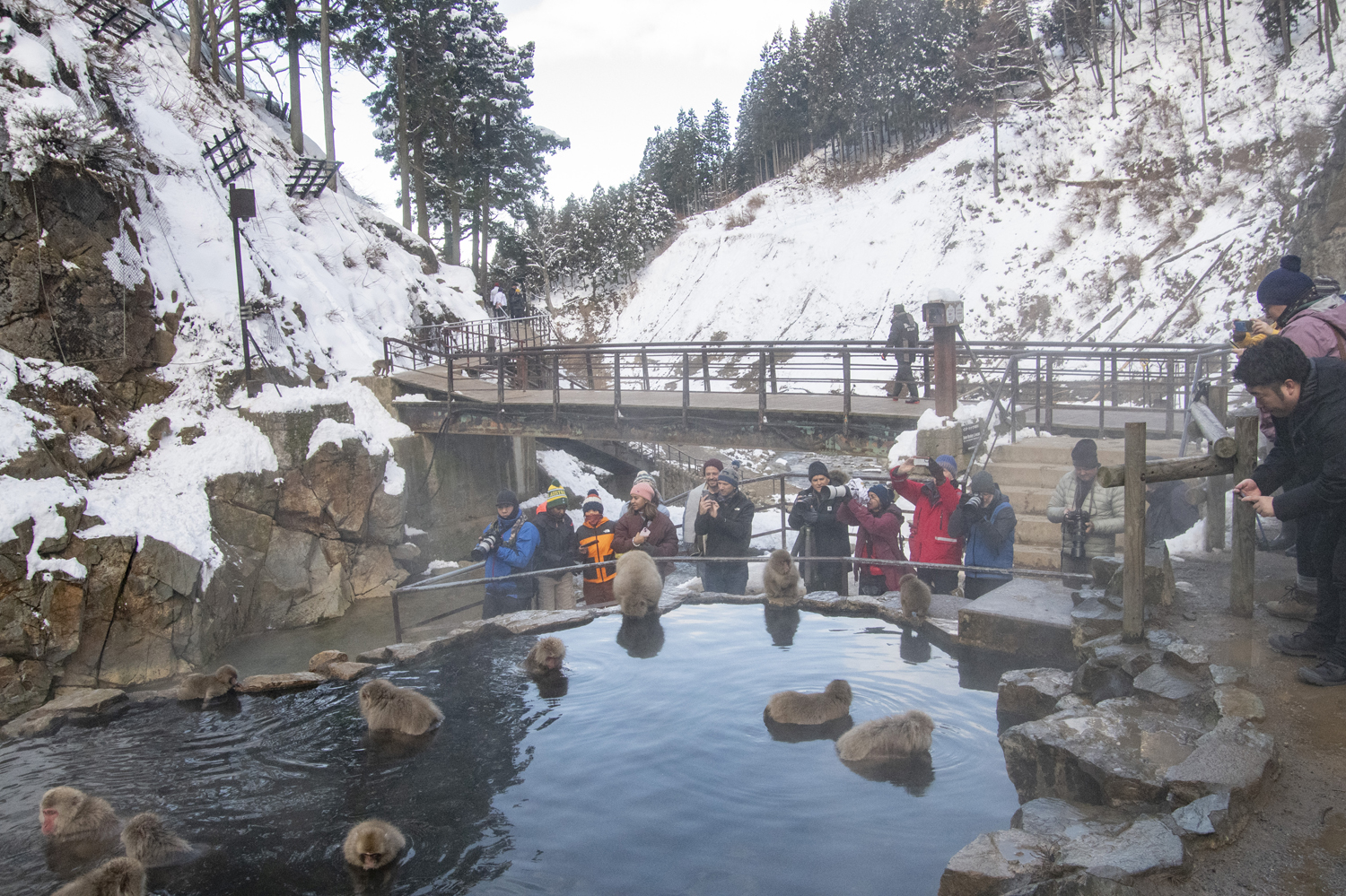
With our eagle shots “in the can”, we left Hokkaido and returned to Tokyo, where we boarded our private bus for the five-hour journey north into the Japanese Alps and Jigokudani, the valley of hell, so called because of the many volcanic hot springs, which attract a multitude of endemic snow monkeys.
Our bus journey north was slowed by a heavy blizzard, but the heavy snowfall proved to be a bonus and greatly enhanced the scenic beauty of the area during our stay. By the time we left three days later much of the snow had melted and we were thankful for the winter conditions we had experienced. For many of our group, the snow monkeys were their primary reason for joining the tour, and they were not disappointed. Most conventional photo tours spend just 2-3 hours at the hot springs where the monkey’s aggregate. On our trip, some of the most enthusiastic among us spent 20 hours with the monkeys and witnessed endearing behavior of every description. It was an experience that none of us will forget.
The bus ride back to Tokyo, including the congested rush hour traffic, as well as the evening farewell dinner are all a bit of a blur for me. We had had so many fabulous wildlife encounters and photo moments in the previous two weeks that I spent most of those final hours with a smirk on my face, dreaming of the joy I would have once I was home and could finally review my images.

